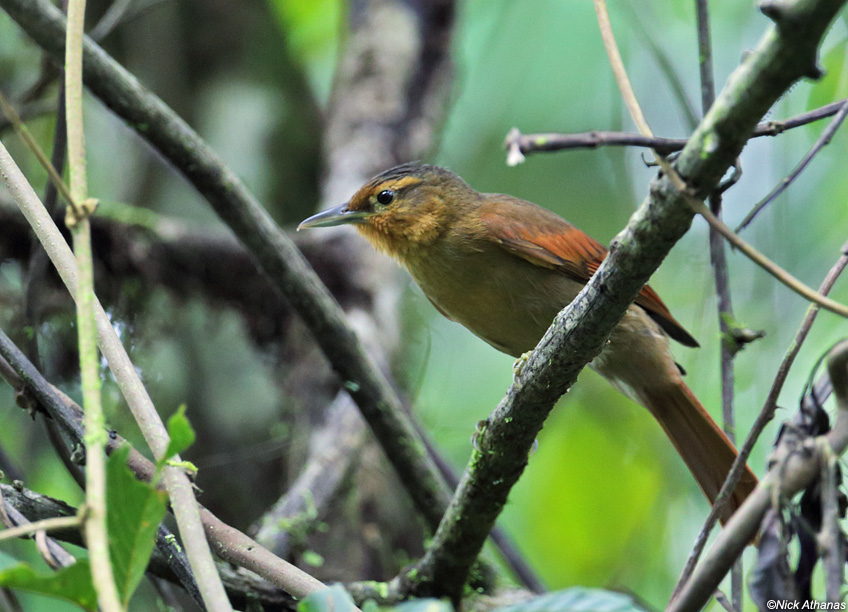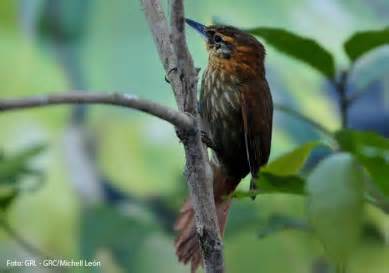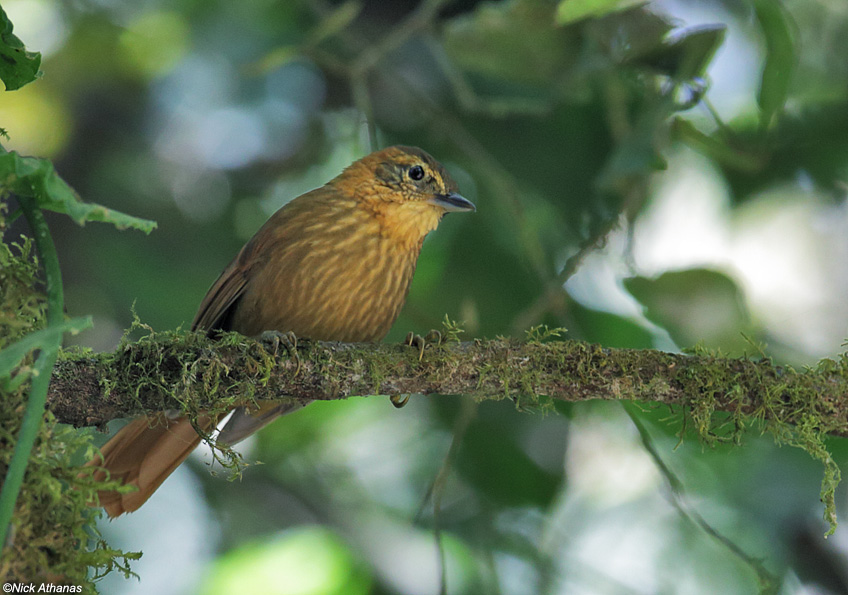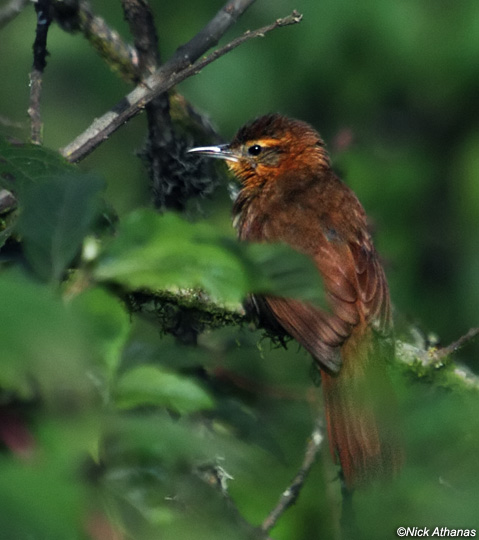
Syndactyla ruficollis
SUBFAMILY
Philydorinae
TAXONOMY
Syndactyla ruficollis Taczanowski, 1884.
OTHER COMMON NAMES
English: Red-necked foliage-gleaner; French: Anabate б cou
roux; German: Rothals-Baumspдher; Spanish: Trepamusgo de
Cuello Rufo.
PHYSICAL CHARACTERISTICS
Body length is about 7 in (18–18.5 cm). Bill is short, straight,
rather stout, and pointed. The body is slender, and the tail is
long. The sexes are similar. The back, neck, and top of the
head are rufous-brown, the underparts are brown streaked with
buff, the tail is rufous, and there is a buffy stripe over the eye.
DISTRIBUTION
An endemic species that occurs only in a small Andean region
of extreme southern Ecuador and northern Peru.
HABITAT
Inhabits humid, lowland and montane forest, secondary woodland,
and forest edges. Mostly inhabits evergreen humid forest,
but also occurs in somewhat drier, deciduous forest. Occurs
mostly at 4,250–9,400 ft (1,300–2,700 m), but as low as 1,950
ft (600 m) in undisturbed primary forest.
BEHAVIOR
A non-migratory species. Occurs singly, as a breeding pair, or
in a small group. Often occurs with other birds in mixedspecies
foraging flocks. The song is an accelerating series of
harsh, nasal notes.
FEEDING ECOLOGY AND DIET
Forages on tree branches and trunks for insects and other invertebrates
hidden among bark or in epiphytic mosses and bromeliads.
REPRODUCTIVE BIOLOGY
Constructs a nest within a burrow dug into an earthen bank. Both
the male and female incubate the eggs and rear the nestlings.
CONSERVATION STATUS
This endemic species is listed as Vulnerable, largely because its
highly restricted habitat is being fragmented by conversion
into agricultural land-use and further reduced by other disturbances.
SIGNIFICANCE TO HUMANS
None known.
Photo Gallery of - Rufous-necked foliage-gleaner




 Animalia Life
Animalia Life